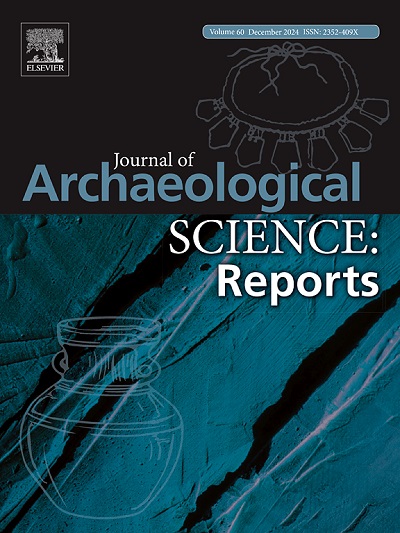Discoidal-core technology in Chinese Paleolithic: Experimental perspectives
IF 1.5
2区 历史学
0 ARCHAEOLOGY
引用次数: 0
Abstract
Discoidal-core Technology in the Chinese Paleolithic has been a hot topic. The discoidal core appeared sporadically during the Early Pleistocene in China, but its presence considerably increased in the late Middle Pleistocene and Late Pleistocene. This core type had been associated with different lithic technologies, including simple core-flake technology, Acheulean technology, and Levallois technology, exhibiting broad employment and various technological adaptations. To understand the significance of discoidal core in technological and behavioral evolution in the Chinese Middle Paleolithic, we conduct a series of experiments, examining the flaking strategies of unifacial and bifacial discoidal cores in terms of raw material selection, core structure, and flake morphology characteristics. The result shows that knapping discoidal cores, particularly bifacial discoidal cores require a certain degree of preparing thought and planning behavior, and the reduction produces flakes under the concept of cyclical flaking and results in standardized cores. Discoidal cores present a complex technological behavior in senses, rather than a result of expedient or fully non-planned performances, which is of great significance for us to further explore the evolution of lithic technology in the Chinese Paleolithic and provides a crucial insight into human adaptations in the Middle Paleolithic in China.
中国旧石器时代盘状核技术:实验视角
中国旧石器时代的盘状核技术一直是研究的热点。盘状岩心在中国早更新世时期零星出现,但在中更新世晚期和晚更新世时期出现较多。这种岩心类型与不同的岩屑技术有关,包括简单的岩心薄片技术、Acheulean技术和Levallois技术,显示出广泛的应用和各种技术适应。为了了解盘状核在中国中旧石器时代技术和行为进化中的意义,我们进行了一系列实验,从原材料选择、核结构和薄片形态特征等方面考察了单面和双面盘状核的剥落策略。结果表明,盘状岩芯,特别是双面盘状岩芯,需要一定程度的准备思想和计划行为,并且在循环剥落的概念下,还原会产生薄片,并导致标准化岩芯。盘状岩心表现出一种复杂的感觉技术行为,而不是权宜之计或完全无计划的表现,这对我们进一步探索中国旧石器时代石器技术的演变具有重要意义,并为了解中国旧石器时代中期人类的适应提供了重要的见解。
本文章由计算机程序翻译,如有差异,请以英文原文为准。
求助全文
约1分钟内获得全文
求助全文
来源期刊

Journal of Archaeological Science-Reports
ARCHAEOLOGY-
CiteScore
3.10
自引率
12.50%
发文量
405
期刊介绍:
Journal of Archaeological Science: Reports is aimed at archaeologists and scientists engaged with the application of scientific techniques and methodologies to all areas of archaeology. The journal focuses on the results of the application of scientific methods to archaeological problems and debates. It will provide a forum for reviews and scientific debate of issues in scientific archaeology and their impact in the wider subject. Journal of Archaeological Science: Reports will publish papers of excellent archaeological science, with regional or wider interest. This will include case studies, reviews and short papers where an established scientific technique sheds light on archaeological questions and debates.
 求助内容:
求助内容: 应助结果提醒方式:
应助结果提醒方式:


